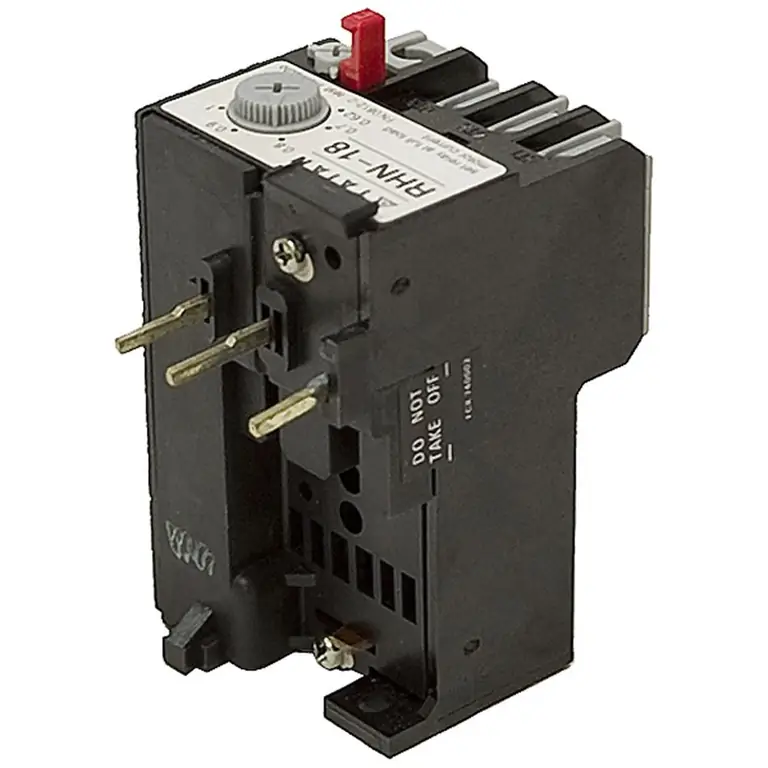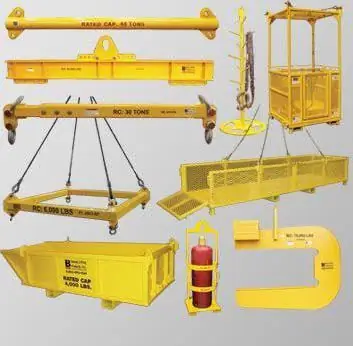2025 Author: Howard Calhoun | [email protected]. Last modified: 2025-01-24 13:10:39
Any industrial production, to one degree or another, is associated with the installation of oversized and complex goods. In many cases, a person cannot do this work on his own. For this, rigging means, mechanisms and devices are used. With their help, moving, unloading, loading objects of any configuration and weight becomes available.

Rigging work
They are operations associated with lifting, holding and moving various objects - parts, assemblies, equipment. The key difference between these works and conventional loading and unloading is the use of special devices. Often rigging means, fixtures have a specific configuration. Their use is due to the impossibility of moving objects due to their size and weight in other ways. The timing of the work, as well as their cost, is determined by the complexity of operations, the characteristics of the cargo, as well as the presence of specialized organizations in the region.
Destination
Rigging mechanisms - fixtures,used to transport large equipment. The main task of work with the use of special equipment is not to exclude human participation in them, but to increase the efficiency of operations. The services of riggers are used by industrial enterprises. Rigging devices allow you to move belt conveyors, machine tools, workbenches and other large-sized equipment in the shortest possible time. In addition, special equipment allows you to increase the safety of operations and ensure the safety of cargo. Rigging devices are used not only in industry, where the transportation of equipment is one of the most important parts of the workflow. Often special equipment is used in the domestic sphere. For example, the services of specialized organizations are resorted to, if necessary, to transport safes, musical instruments, furniture, etc.

Rigging fixtures
Enterprises offering services for the movement of oversized cargo use various devices in their work. All of them are united by the term "equipment". In practice, the following rigging devices are mainly used:
- Slings.
- Blocks.
- Hooks.
- Ropes.
- Eyelets.
- Polyspasty.
- Chains.
- Clamps.
Ropes
As a rule, steel, nylon and hemp cables are used. The latter can be resinous or white. They differ in production technology. Hemp threads impregnated with resin are considered more practical. ExceptAs a result, they are highly durable. White ropes are more flexible. They have a smaller margin of safety and are not used for mechanisms equipped with a machine drive. For installation work, such ropes are rarely used. Steel cables differ in the shape of the section and are classified according to the design feature. As a rule, round and flat ropes with single, double, triple lay are used.

Slings
These rigging devices are represented by pieces of ropes of various configurations. Slings are used to securely and quickly secure the transported cargo. They can be electronic or manual. Slings are used for direct loading / unloading. The maximum height to which the load can be lifted is 3 m. The maximum weight of objects for which slings are used is up to 10 tons. For lifting to a small height, jacks are used. They can be screw, rack, wedge, hydraulic.
Polyspasty and blocks
These mechanisms, as a rule, are part of various lifting equipment. The chain hoist is the simplest lifting device, consisting of blocks. The latter are connected by a rope. Blocks differ in the number of clips (single and multi-roll).
Winch
Its design includes blocks or chain hoists. With the help of these elements, the direct lifting of the load is carried out. Winches are distinguished by the type of drive. It can be electric or manual.

Support structures
Rigging often involves hanging and holding a load on a structure that can support its weight. In this case, hoists are used. If work is done indoors, they are fixed on ceilings and other building elements. If they are absent, then special equipment is installed - a supporting structure. As a rule, it is a metal vertical rack, which is held by special braces. A heavy plate is provided as a support in the structure.
Safety
In the production of rigging, quite heavy objects are lifted and moved. Their weight can be up to several tons. Specialists have developed safety rules when using rigging devices. The requirements take into account all the risk factors in the implementation of operations. Employees of the organization providing rigging services undergo mandatory briefings and advanced training courses. To perform work, you must obtain a special permit, pass a medical examination.

Hardware Requirements
To maintain performance, rigging equipment, mechanisms, and fixtures are regularly inspected. The check is carried out within the stipulated time. Traverses are inspected at least once every six months, containers, tongs and other grippers - 1 rub / month, slings - 1 rub / 10 days (except for rarely used ones).
Extraordinary full technical inspectionequipment must be carried out without fail after the repair of metal elements with the replacement of calculated parts and assemblies, reconstruction, overhaul, replacement of the hook and other similar operations. The results of the procedure are recorded in the journal of rigging mechanisms and devices.
After replacing worn ropes, when they are rewound, the reliability of fastening and correct reeving is checked, the cables are tightened with a working load.
Technical certification and accounting of rigging means, mechanisms and fixtures is carried out by an engineering and technical worker who performs supervisory functions at the enterprise, with the participation of an employee responsible for the good condition of the equipment. The latter can independently check the reliability of the ropes and the correctness of the reeving, tightening with a load after repacking or replacing the cables. The form of the register of rigging equipment and fixtures corresponds to Appendix 9 to the Rules for labor protection when working at height (approved by Order of the Ministry of Labor No. 155n dated 2014-28-03).

Safety
Production of rigging operations involves the use of slings, with the help of which the load is fastened to the lifting mechanism. Before slinging, the specialist must know the entire object. As a rule, the weight of the load is indicated on a plate attached to the frame. If the object is packed, the weight is marked on the box or casing. Lifting and moving objects are carried out with the strict observance of the following rules:
- Slinging cargo, which is accompanied by a passport and instructions, is made according to the specified technology. The slings are fixed in the eyelets provided for them with the help of special hooks on the equipment.
- Slinging should be carried out taking into account the factors of balance and stability of the load during its lifting and subsequent movement. Mechanisms and equipment mounted on the same frame are lifted after the slings are fixed on a common platform. Sheet bundled material is moved using special pickups, which are suspended on a traverse.
- Slinging of channels, angles and other profiled metal products is carried out using universal devices. In sharp corners, linings are placed under the lines.
Classification of objects
All goods that are transported are divided into certain groups depending on the mass:
- Lightweight - up to 250 kg.
- Heavyweight - 250-50000 kg.
- Very heavy - more than 50 tons.
There is one more category - dead weights. They are called objects frozen to the ground, dug into it, fixed on the foundation, pressed against other objects. The mass of such cargoes is usually unknown. It is strictly forbidden to use cranes to lift them. Objects are also classified according to their size and are dimensional and oversized. In the first, the parameters do not exceed the norms specified in the SDA (motor transport), or correspond to the dimensions of the rolling stock (for railway transport). In oversized cargo, these figures exceedestablished standards.

Conclusion
One of the key safety factors is the high professionalism of the personnel of the enterprise, carrying out rigging work. The employee must be familiar with the equipment that he uses, the features of its operation. The production of works is controlled by the foreman. He is responsible for complying with established rules and regulations. Special instructions are being developed for personnel, deviation from which is fraught with serious consequences.
Recommended:
Industrial production of machines and mechanisms

Industrial production in any state is divided into two groups. The first group - it is conditionally designated by the index A - is focused on the production of means of production. This formulation is given in all textbooks on economics. If we expand this concept with an example, then in this sector machines, tools and other equipment are produced that are used in the same industrial enterprises
Grounding devices and electrical safety

With an internal breakage of the conductor, it becomes possible for it to touch the body of the device, and in this case the latter will be a mortal danger, invisible, and therefore doubly terrible. Grounding devices are used to avoid such situations
Load handling devices and containers

The article is devoted to lifting devices and containers. The varieties of this equipment, the main characteristics of the design and preventive maintenance measures are described
Protection devices: purpose, types, classification, specifications, installation, features of operation, settings and repair

Protection devices are currently in operation almost everywhere. They are designed to protect both electrical networks and electrical equipment, various machines, etc. It is very important to properly install and follow the operating rules so that the devices themselves do not cause a fire, explosion, etc
Modern self-service devices: what is the difference between a terminal and an ATM?

We all use these self-service devices: withdraw, deposit cash and pay receipts. If you or your friends still do not know how a terminal differs from an ATM, then this article is a must-read

